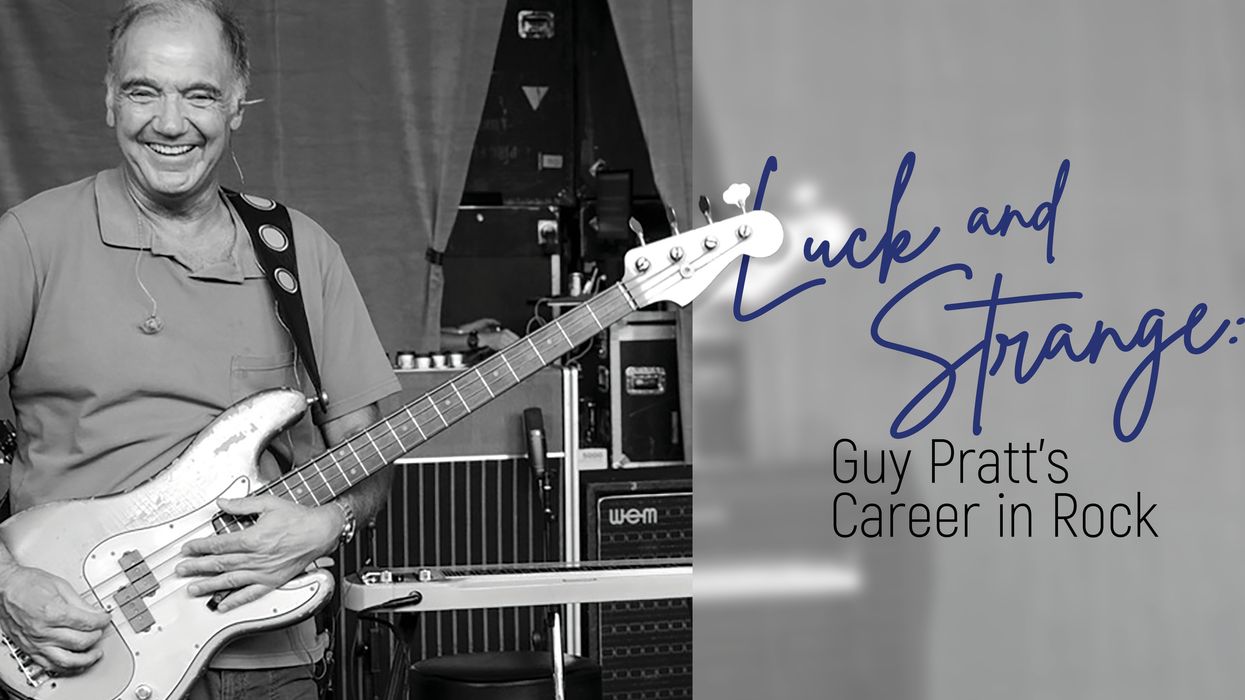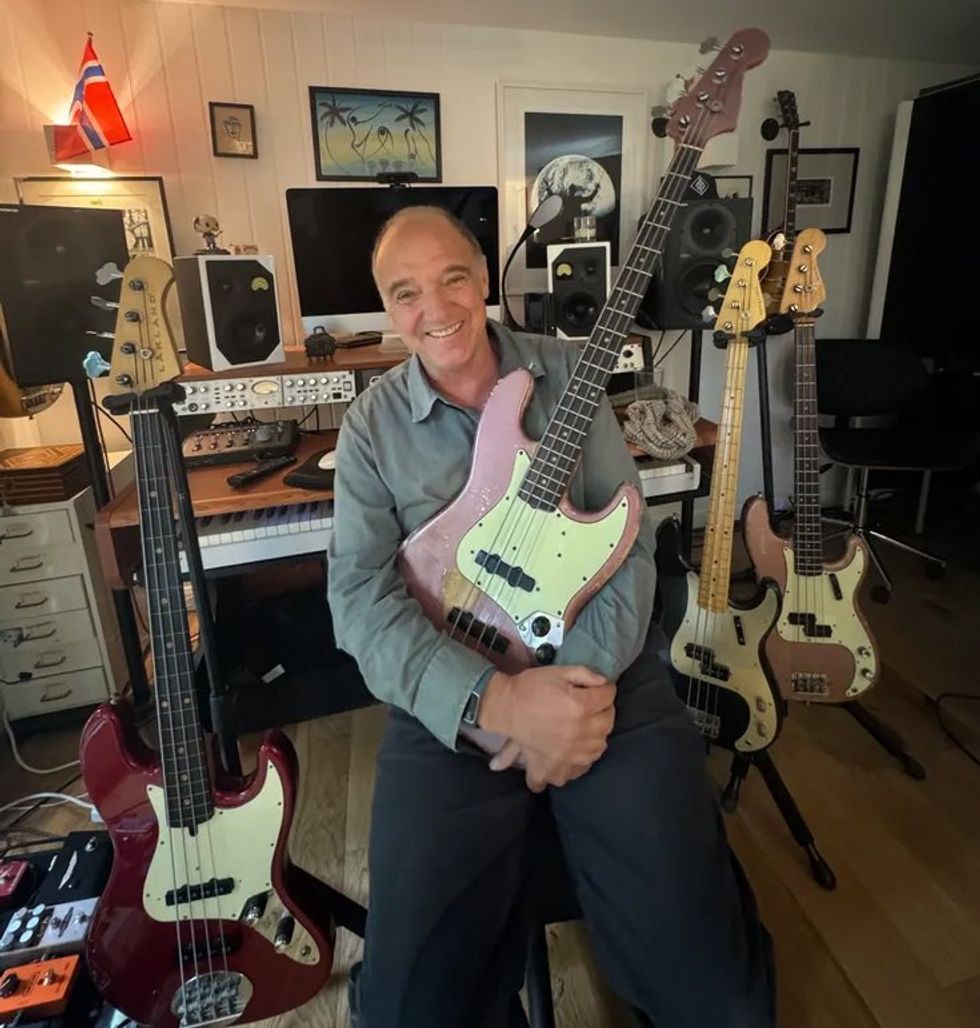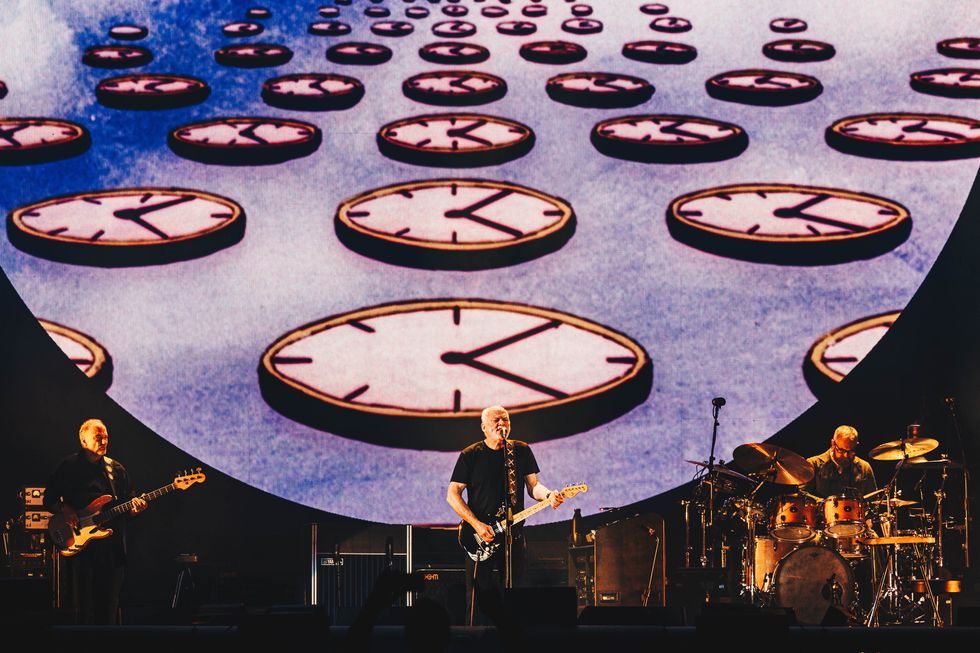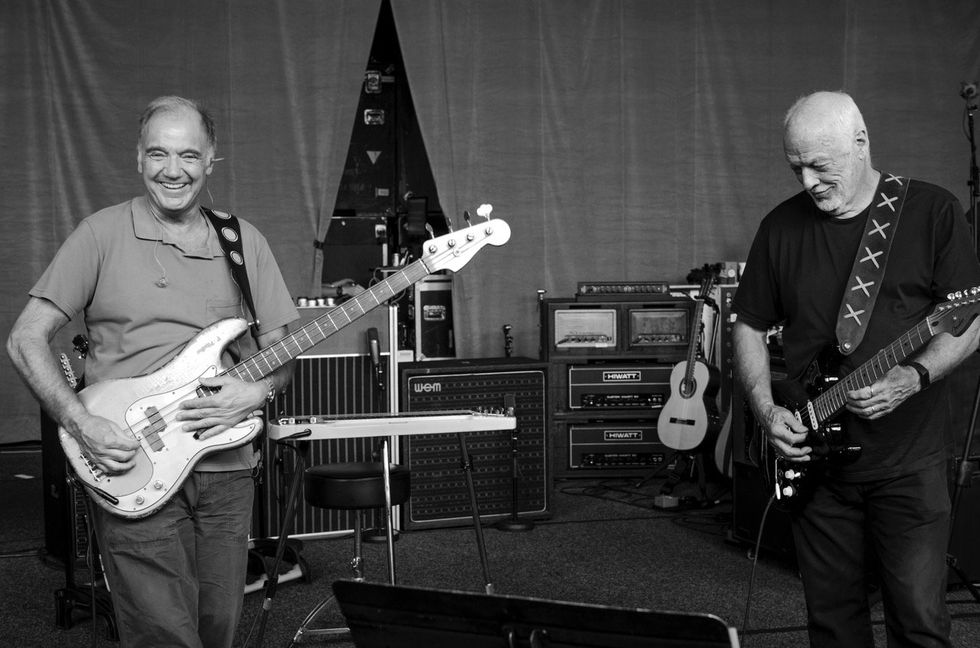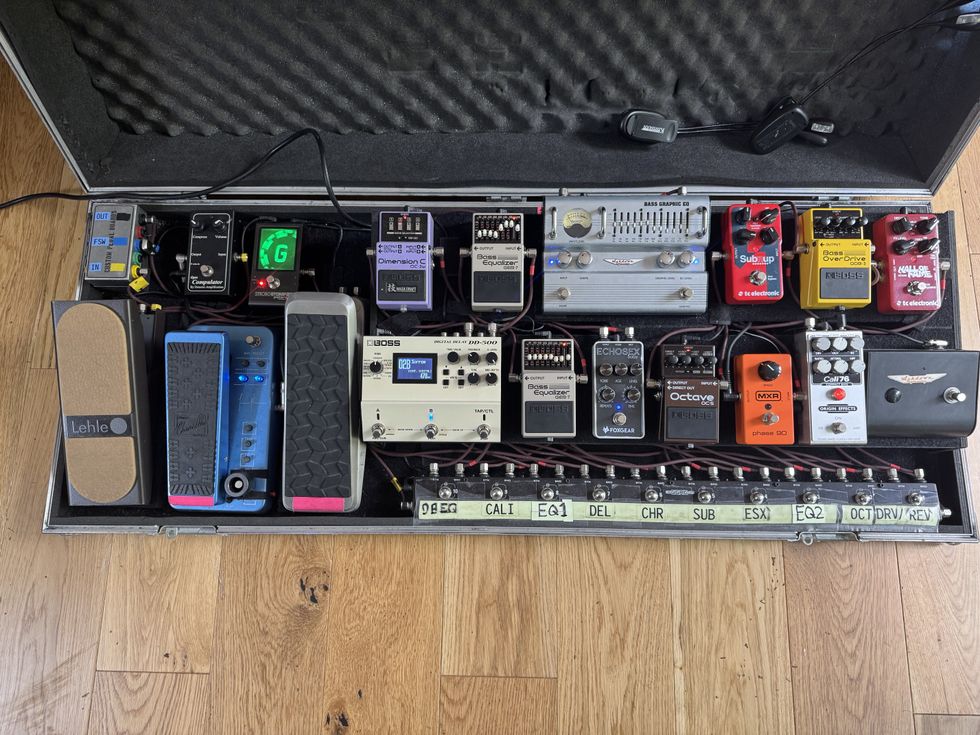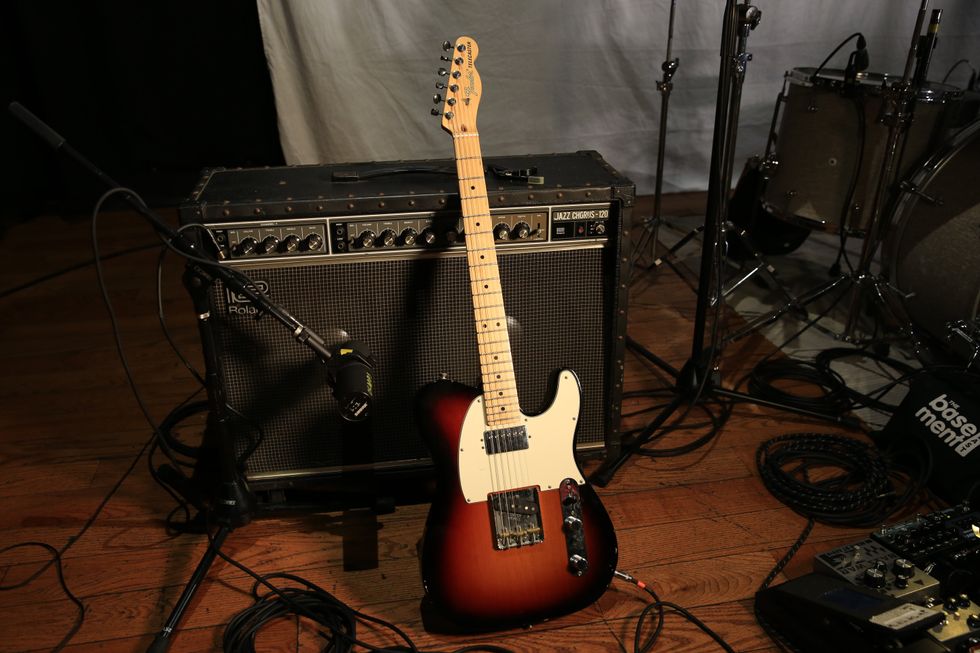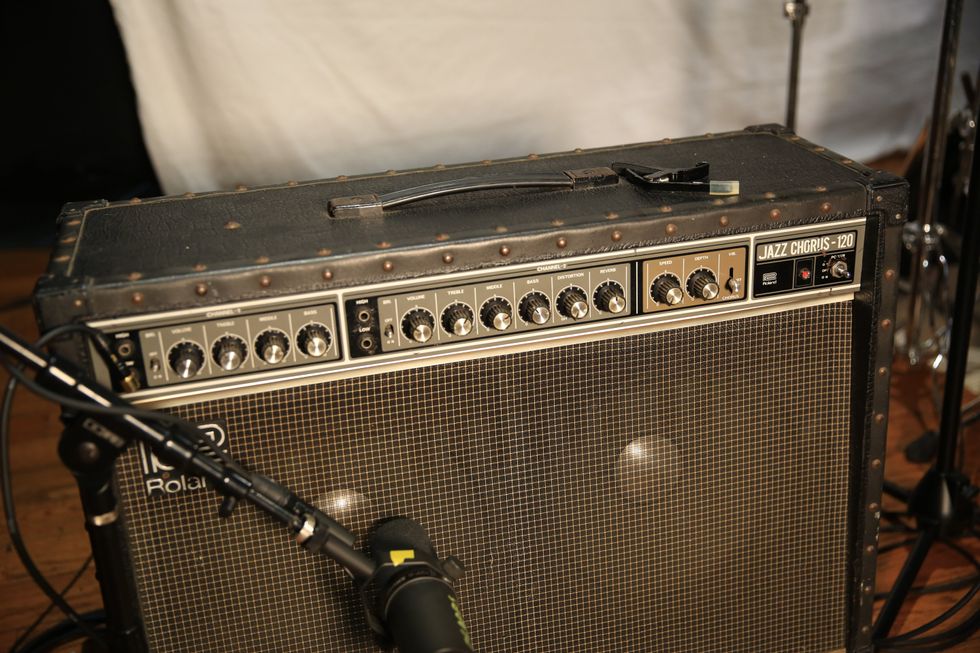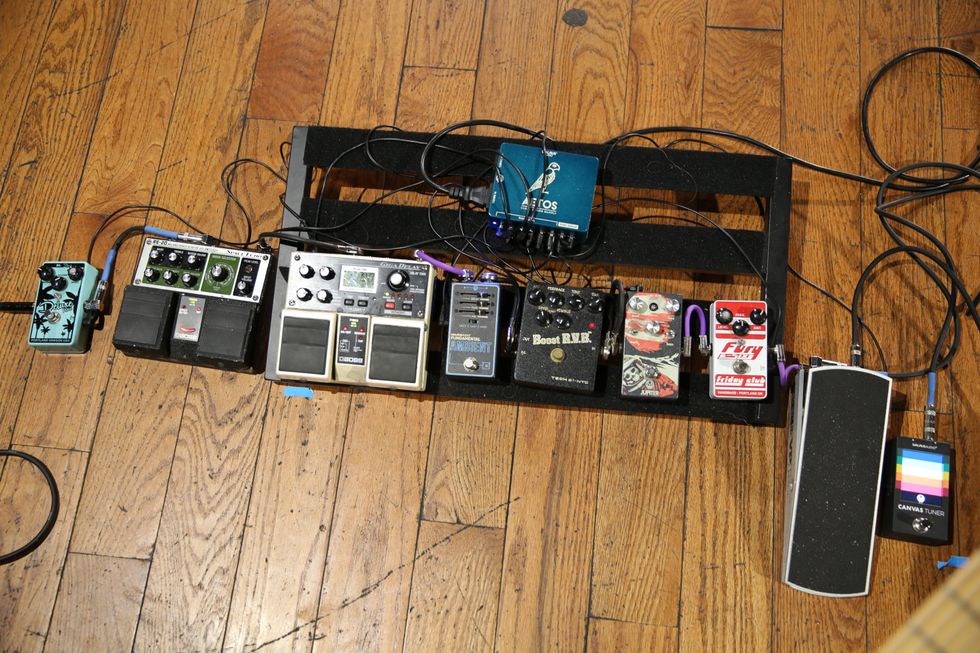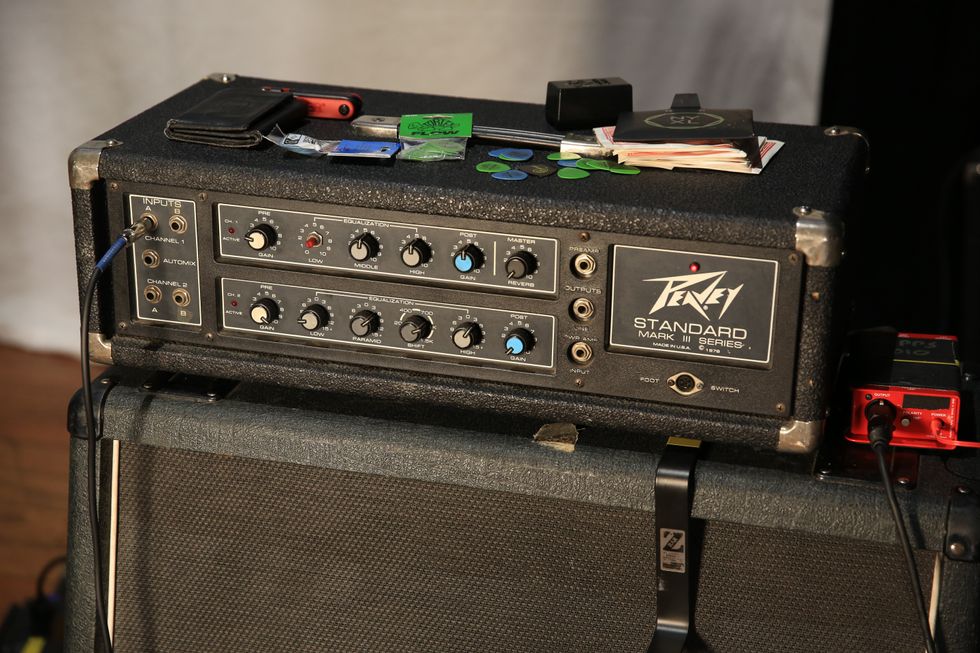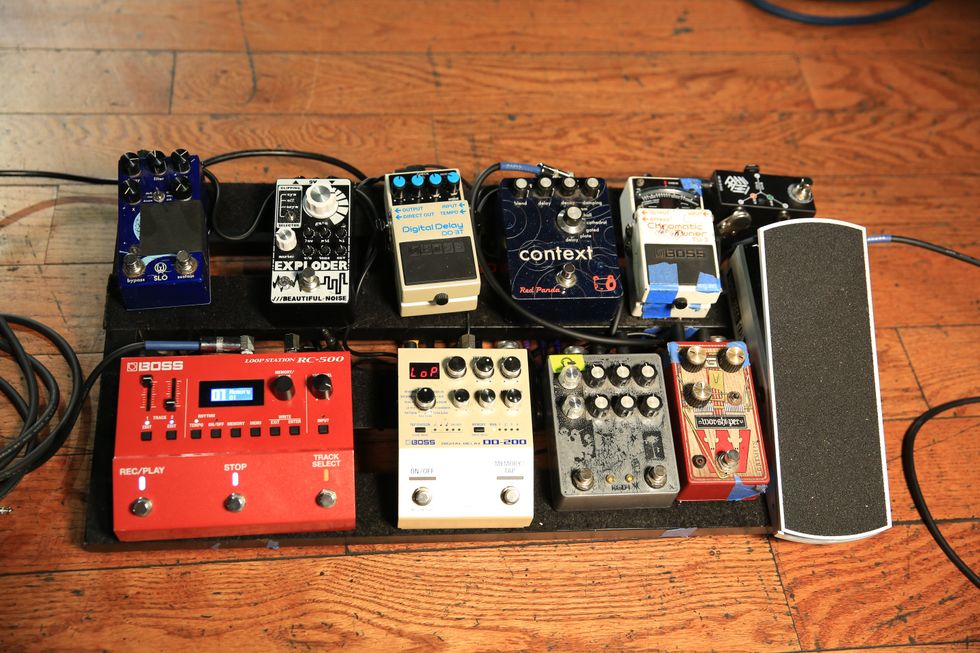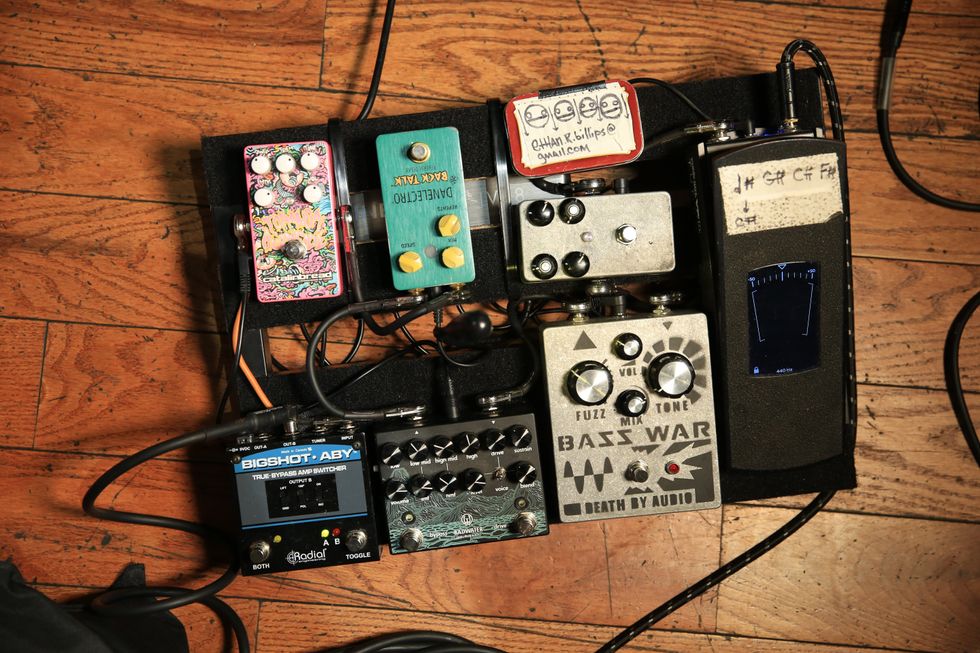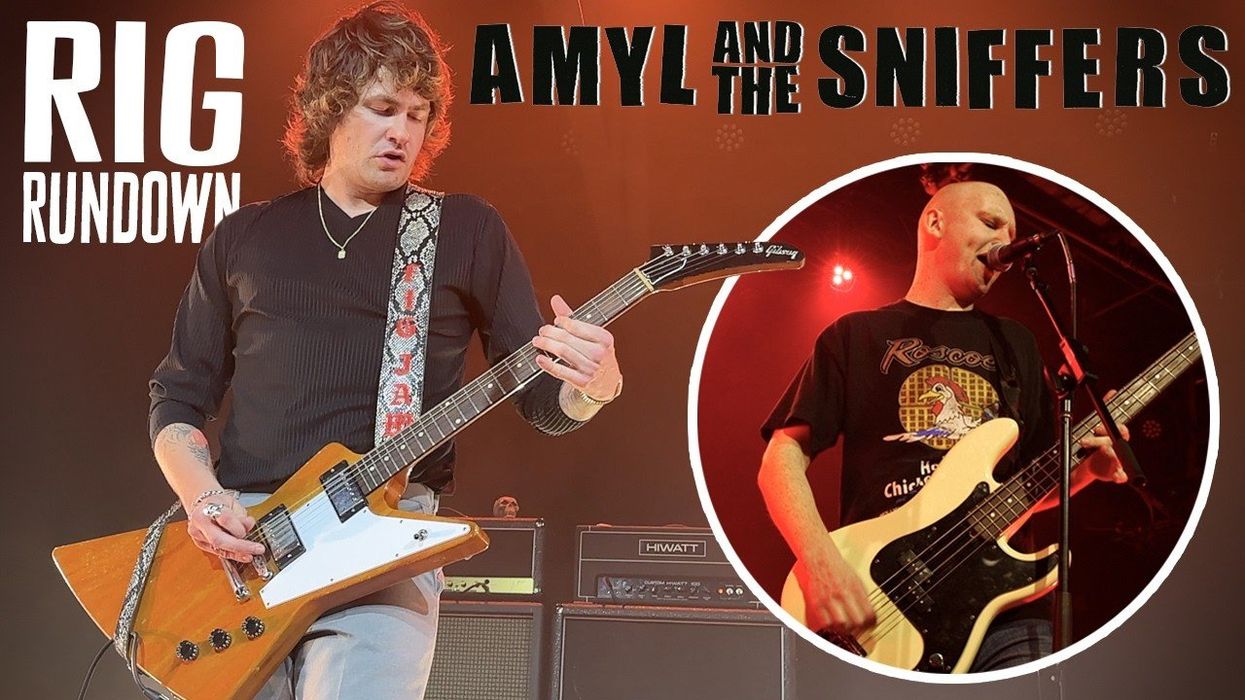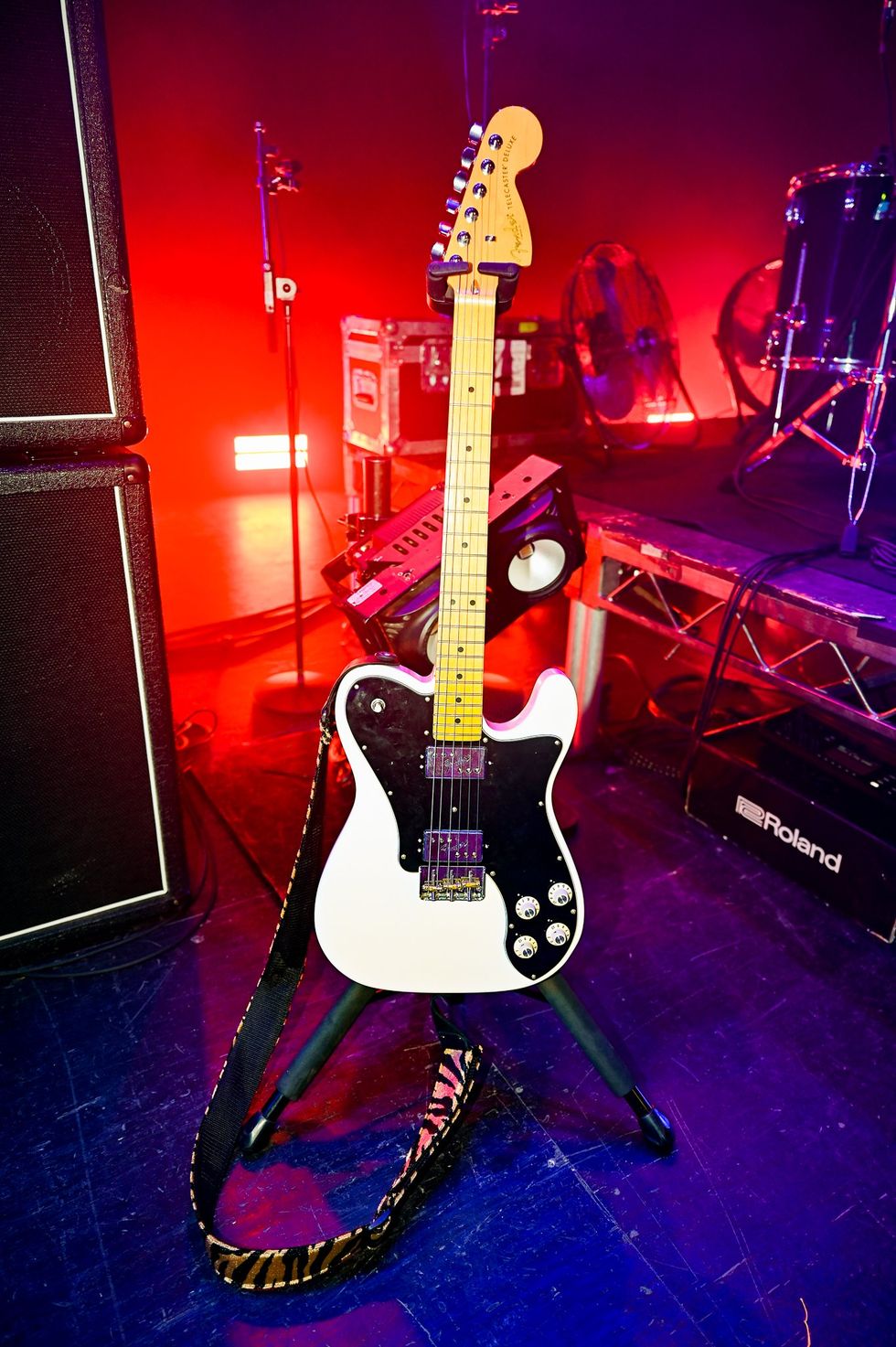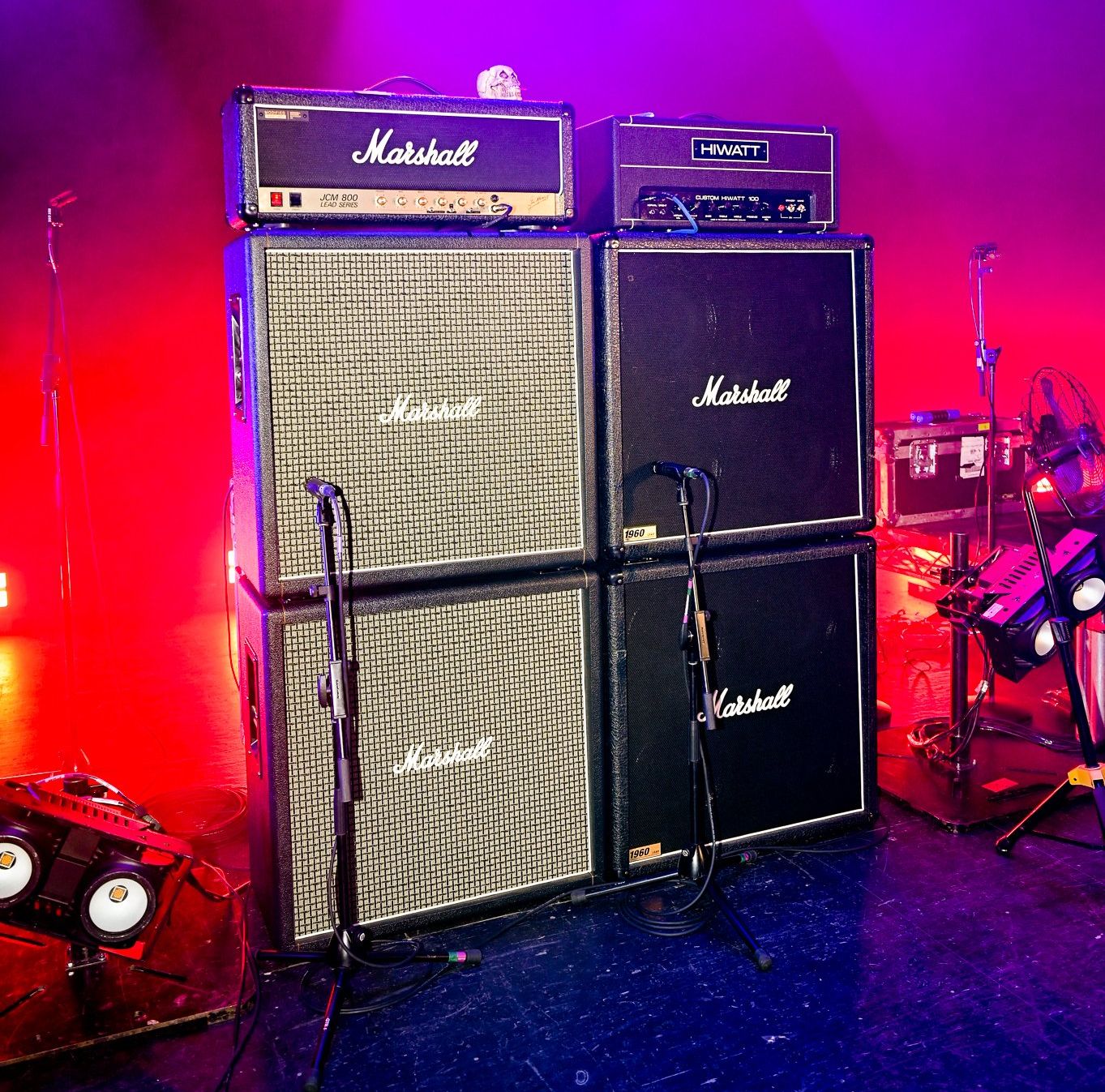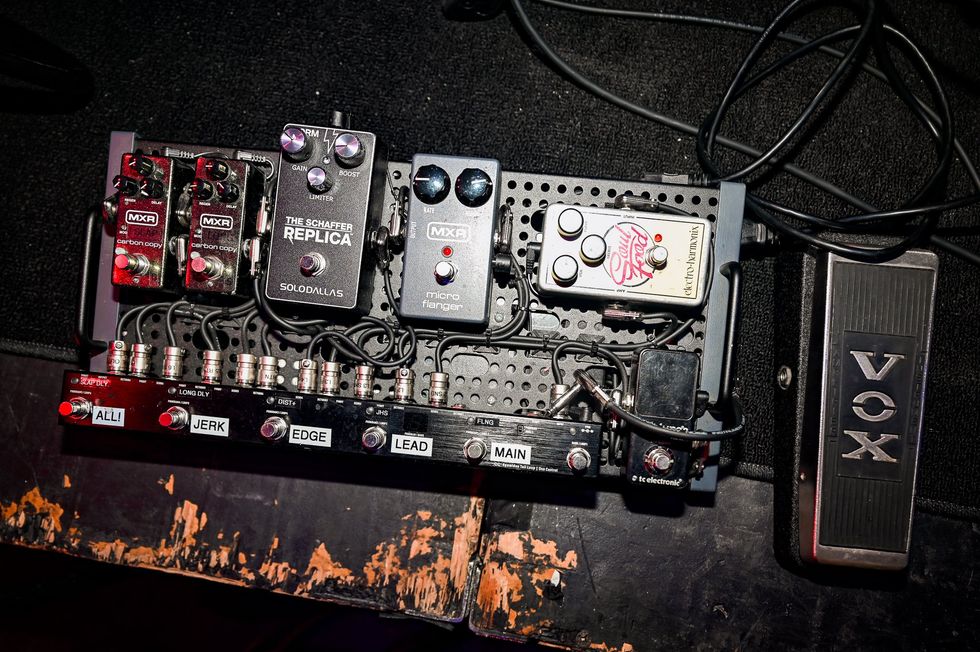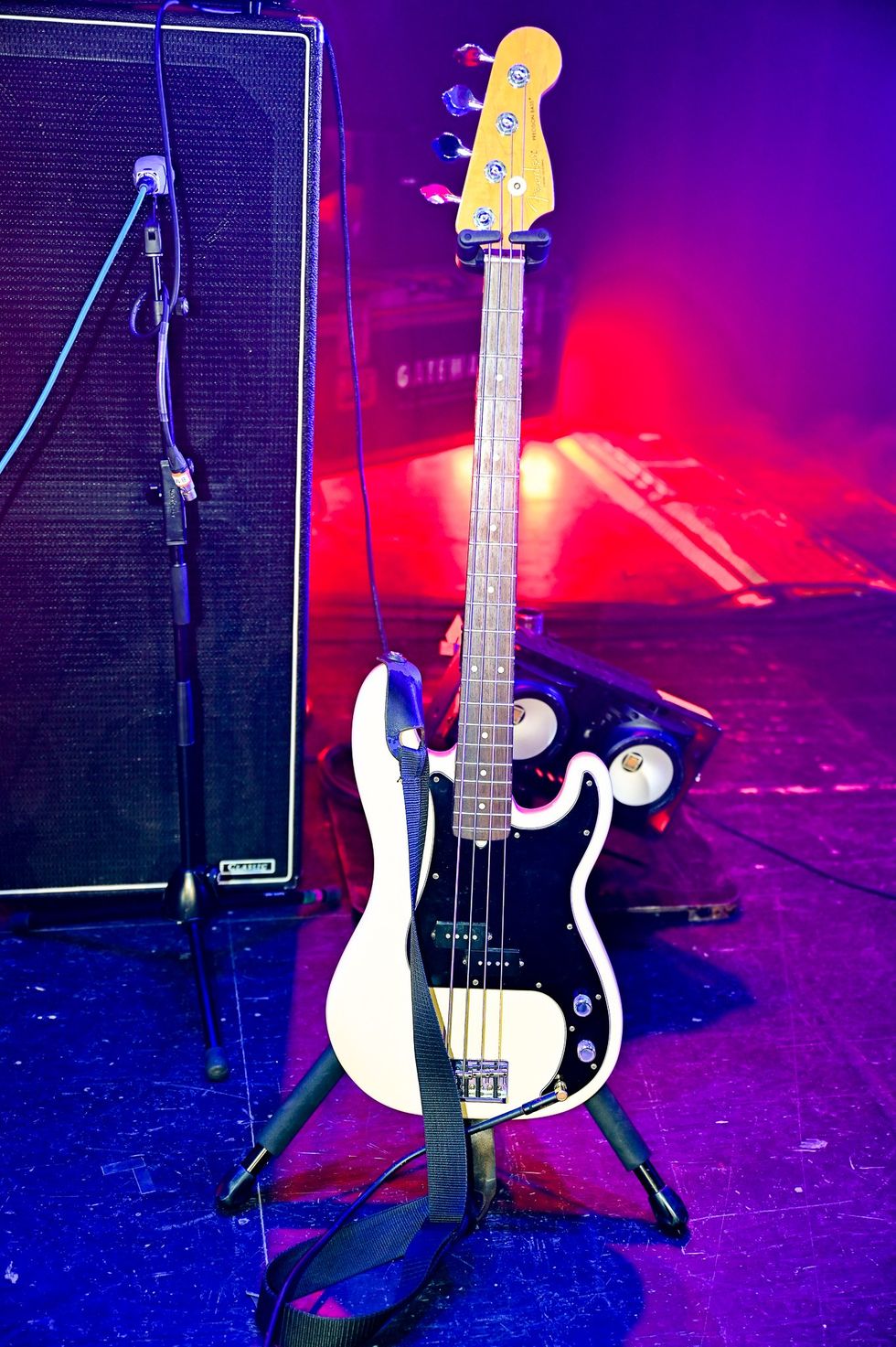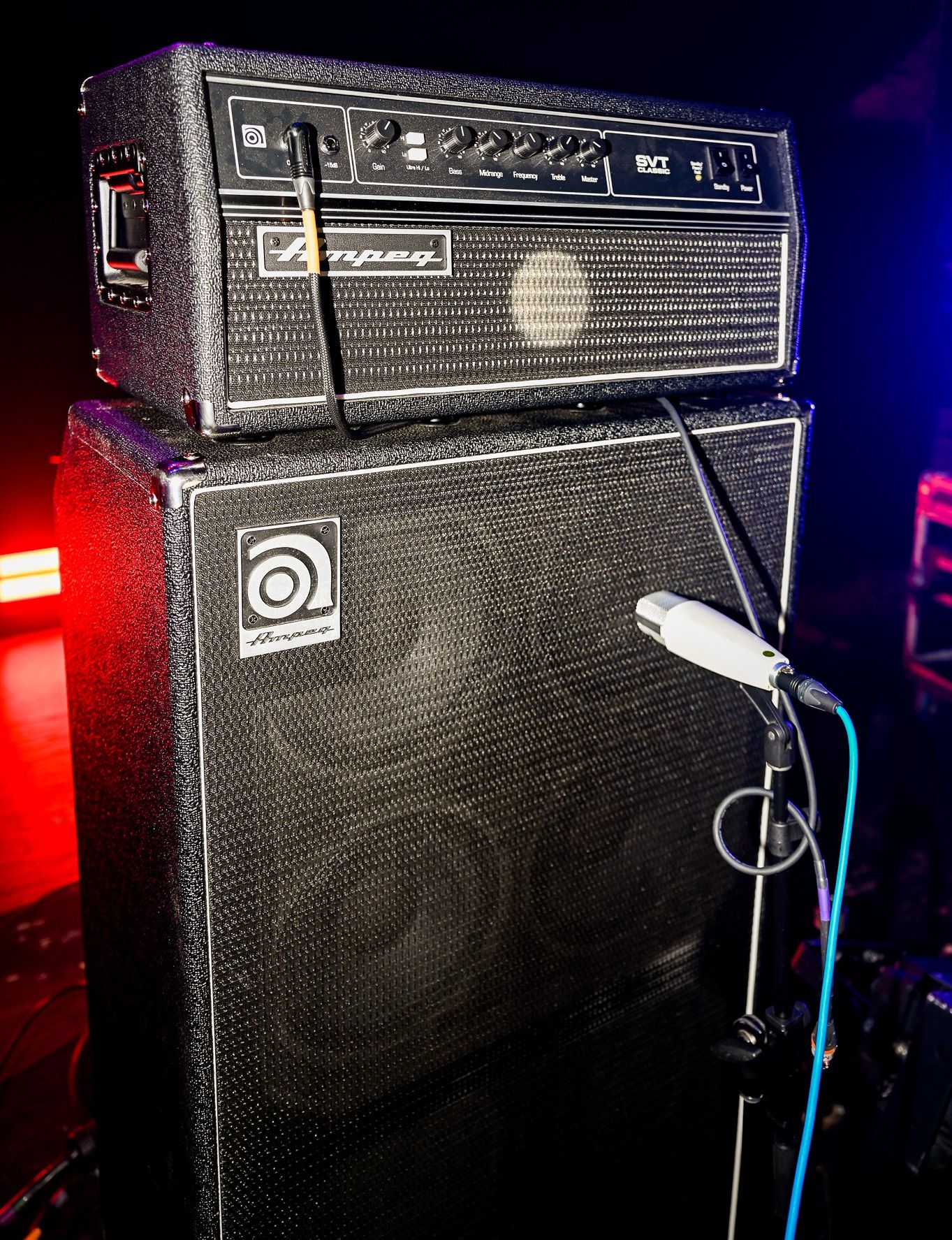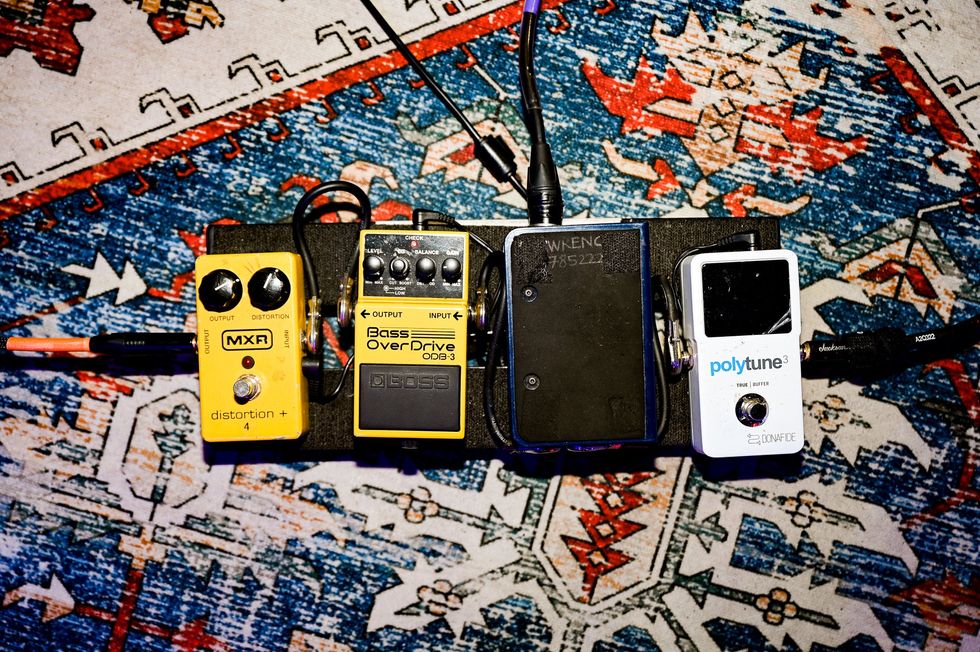Hollywood, CA (January 9, 2017) -- Fender Musical Instruments Corporation (FMIC) sets the stage for 2017 with the launch of the American Professional Series, a new professional-grade collection of electric guitars and basses debuting January 19 at NAMM 2017 in Anaheim, Calif.
The American Professional series invites a new generation of players to express themselves with an original, toneful and roadworthy flagship line that honors Fender’s classic models, while boldly proclaiming the brand’s foothold into not only a new era of music but also a new generation of players. A proud testament to more than 70 years of knowledge, technology, and experience making iconic instruments, the American Professional is one of Fender’s broadest electric series to date; It brings forth best-in-class instruments giving committed players the best of yesterday and today by pairing industry-leading models with new modern, player-centric features designed for an incredibly diverse number of artists across all musical genres.
“We are committed to evolving with artists as their musical expression diversifies,” said Justin Norvell, Vice President, Electric Guitars and Basses. “It’s our goal to give artists the tools they need to push the boundaries of their artistry in ways they never thought were possible. The American Professional series stays true to the integrity, quality and craftsmanship of legendary Fender designs, while incorporating more modern, player-centric features.”
To demonstrate this new line’s versatility, Fender American Professional guitars and basses are already being used by top artists across multiple musical genres, such as: singer and producer Ty Dolla $ign; Rock and Roll Hall of Fame inductee and Guns N’ Roses bassist Duff McKagan; rapper and producer Mac Miller; multi-instrumentalist and singer-songwriter Dhani Harrison; American indie rock band Local Natives– accompanying each on their musical journey toward exceptional artistry.
Handcrafted in the U.S.—by professionals, for professionals—the American Professional series introduces new Stratocaster, Telecaster, Precision Bass and Jazz Bass guitars while adding new platforms—the Tele Deluxe, Jaguar and Jazzmaster with the later featuring a rich voice, flexible electronics and Fender’s new V-Mod Jazzmaster pickups – the introduction of Jazzmaster and Jaguar platforms is a testament to the resurgence of offset guitars. Featuring new pickups designed by pickup guru Tim Shaw, the line also incorporates a brand-new "Deep C" shaped neck profile, new electronics, a new case, bone nut, and narrow-tall frets for easier string bending.
In total, the launch boasts 16 models and 92 SKUs available in 11 colors, including three new colorways: Sonic Gray, Antique Olive and Mystic Seafoam. They speak to a legacy cemented by the enduring influence of the world's greatest players and songwriters, including Jimi Hendrix, Kurt Cobain, Eric Clapton, David Gilmour, Pete Townshend and many more.
The American Professional series ranges from $1,399.99 - $1,599.99 and is available now at local dealers and on www.Fender.com. Models include:
American Professional Stratocaster
The new American Professional Stratocaster and the American Professional Stratocaster Left-Hand are the latest evolution of the world’s most-loved electric guitar, that boasts a host of new features aimed at professional players. Developed by pickup master Tim Shaw, the new V-Mod single-coil pickups are voiced specifically for each position, mixing alnico magnet types to produce powerful, nuanced tones. Other key features include: a treble-bleed circuit that is tailored specifically for the guitar’s voice and a new modern “Deep C” shaped neck profile with narrow-tall frets that make it easy for players to bend strings. The American Professional Stratocaster right-hand model is offered in 3-Color Sunburst, Black, Sienna Sunburst, Sonic Gray, Antique Olive and Olympic White. The Left-Hand model is offered in 3-Color Sunburst, Olympic White and Black. Pricing for the new American Professional Stratocaster is $1,399.99-$1,499.99, and the American Professional Stratocaster Left-Hand is $1,399.99.
American Professional Stratocaster HH Shawbucker
The American Professional Stratocaster HH ShawBucker isn’t simply a reimagining of the classic design; it’s the authentic original model, evolved for today’s players. The pair of warm, rich-sounding ShawBucker humbucking pickups are voiced specifically for each position, producing powerful, nuanced tones. Other key features include: a treble-bleed circuit, that is tailored specifically for the guitar’s voice and a new modern “Deep C”-shaped neck profile with narrow-tall frets that make it easy for players to bend strings. The American Professional Stratocaster HH ShawBucker model is offered in 3-Color Sunburst, Olympic White, Black, Sonic Gray and Antique Olive. Pricing for the new American Professional Stratocaster HH ShawBucker is $1,399.99.
American Professional Stratocaster HSS Shawbucker
The best of yesterday and today, the American Professional Stratocaster HSS ShawBucker is one of the latest forms of electric inspiration from Fender. The fat-sounding ShawBucker humbucking bridge pickup is joined by Tim Shaw’s latest vintage-informed design—the V-Mod single-coil pickups. Other new features include: a treble-bleed circuit that is tailored specifically for the guitar’s voice and a modern “Deep C” shaped neck profile with narrow-tall frets that make it easy to bend strings. The American Professional Stratocaster HSS ShawBucker is offered in 3-Color Sunburst, Black, Sienna Sunburst, Sonic Gray, Antique Olive and Olympic White. Pricing for the new American Professional Stratocaster HSS ShawBucker $1,399.99-$1,499.99.
American Professional Telecaster
The American Professional Telecaster & American Professional Telecaster Left-Hand encompasses everything artists need to play their best. Developed by legendary pickup master Tim Shaw, the new V-Mod single-coil pickups are voiced specifically for each position, mixing alnico magnet types to produce powerful and nuanced tones. Other key features include: the newly redesigned Telecaster bridge that sports three compensated brass barrel saddles, a treble-bleed circuit that is tailored specifically for the guitar’s voice, and a new modern “Deep C” shaped neck profile. The American Professional Telecaster is offered in 3-Color Sunburst, Olympic White, Natural, Crimson Red Transparent, Sonic Gray, 2-Color Sunburst, Butterscotch Blonde and Mystic Seafoam. The Left-Hand model is offered in 3-Color Sunburst, Black and Butterscotch Blonde. Pricing for the new American Professional Telecaster and American Professional Telecaster Left-Hand is $1,399.99-$1,499.99.
American Professional Telecaster Deluxe ShawBucker
Today’s version of the American Professional Telecaster Deluxe ShawBucker, brings modern, player-oriented features to the stage and studio. The pair of warm, rich-sounding ShawBucker humbucking pickups are voiced specifically for each position, producing powerful, nuanced tones. Other key features include: a new modern “Deep C” shaped neck profile, a treble-bleed circuit that is tailored specifically for the guitar’s voice, and narrow-tall frets that make it easy to bend strings. The American Professional Telecaster Deluxe ShawBucker is offered in 3-Color Sunburst, Sonic Gray, Black and Natural. Pricing for the new American Professional Telecaster Deluxe ShawBucker is $1,399.99-$1,499.99.
American Professional Jaguar
The American Professional Jaguar has been updated with modern features and materials, “hot-rodding” it for today’s professional players. The brand-new V-Mod Jaguar pickups expand the guitar’s sonic palette with hot, vintage-informed tone. The improved tremolo and bridge incorporate a screw-in arm and brass Mustang saddles that stabilize the strings, while adding a touch of sonic zip to the player’s tone. Other new features include: the modern “Deep C” shaped neck profile, a treble-bleed circuit that is tailored specifically for the guitar’s voice, and narrow-tall frets. The American Professional Jaguar is offered in 3-Color Sunburst, Olympic White, Sonic Gray and Antique Olive. Pricing for the new American Professional Jaguar is $1,499.99.
American Professional Jazzmaster
An elegant model with flexible electronics and a rich voice, the American Professional Jazzmaster lends its unique sound to any player’s vision. Fender’s new V-Mod Jazzmaster pickups kick out hot, vintage-inspired tone with plenty of punch and definition. The improved tremolo and bridge incorporate a screw-in arm and brass Mustang saddles that stabilize the strings, while adding a touch of sonic zip to the player’s tone. Other new features include: a treble-bleed circuit that is tailored specifically for the guitar’s voice, modern “Deep C”shaped neck profile and narrow-tall frets. The American Professional Jazzmaster is offered in 3-Color Sunburst, Olympic White, Sonic Gray and Mystic Seafoam. Pricing for the new American Professional Jazzmaster is $1,499.99.
American Professional Jazz Bass
The American Professional Jazz Bass and the American Professional Jazz Bass Left-Hand combine modern features and materials with Fender’s craftsmanship and expertise to produce a contemporary bass. Developed by pickup master Michael Bump, the brand new V-Mod single-coil Jazz Bass pickups use a carefully selected blend of alnico magnet types. The redesigned tuning machines use a fluted shaft, creating optimum break angle over the nut, while keeping the string windings tight for increased sustain and enhanced tuning stability. Other new features include: a slim modern “C” shaped neck profile, narrow-tall frets, and Posiflex graphite support rods that run the length of the neck. The American Professional Jazz Bass is offered in 3-Color Sunburst, Olympic White, Sonic Gray and Black. The Left-Hand model is offered in 3-Color Sunburst, Sonic Gray and Black. Pricing for the new American Professional Jazz Bass and the American Professional Jazz Bass Left-Hand is $1,499.99.
American Professional Jazz Bass Fretless
The American Professional Jazz Bass Fretless combines modern features and materials with Fender’s craftsmanship and expertise to produce a contemporary bass. Developed by pickup master Michael Bump, the brand new V-Mod single-coil Jazz Bass pickups use a carefully selected blend of alnico magnet types for balanced tone. Other features include: the slim modern “C” shaped neck profile, and Posiflex graphite support rods that run the length of the neck. It also includes redesigned tuning machines that use a fluted shaft, creating the optimum break angle over the nut, while keeping the string windings tight for increased sustain. The American Professional Jazz Bass Fretless is offered in 3-Color Sunburst, Black and Sonic Gray. Pricing for the new American Professional Jazz Bass Fretless is $1,499.99.
American Professional Jazz Bass V
The American Professional Jazz Bass V combines modern features and materials with Fender’s craftsmanship and expertise to produce a truly contemporary bass. Developed by pickup master Michael Bump, the brand new V-Mod single-coil Jazz Bass pickups use a carefully selected blend of alnico magnet types for balanced tone. The redesigned tuning machines use a fluted shaft, creating the optimum break angle over the nut while keeping the string windings tight for increased sustain. Other features include: a slim modern “C” shaped neck profile, narrow-tall frets, and Posiflex graphite support rods that run the length of the neck. The American Professional Jazz Bass V is offered in 3-Color Sunburst, Olympic White, Black and Sonic Gray. Pricing for the new American Professional Jazz Bass V is $1,599.99.
American Professional Precision Bass
As music evolves our instruments change in lockstep - the end result is today’s version of the American Professional Precision Bass and the American Professional Left-Hand. Developed by longtime bass pickup master Michael Bump, the brand new V-Mod split-coil Precision Bass pickup uses a carefully selected blend of alnico magnet types for balanced tone. Other features include: the “golden” ’63 P Bass neck profile, narrow-tall frets, Posiflex graphite support rods that run the length of the neck, and redesigned tuning machines that use a fluted shaft. The American Professional Precision Bass is offered in 3-Color Sunburst, Olympic White, Black and Antique Olive. The Precision Bass Left-Hand model is offered in 3-Colored Sunburst, Olympic White and Black. Pricing for the new American Professional Precision Bass is $1,499.99, and the American Professional Left-Hand is $1,449.99.
American Professional Precision Bass V
The American Professional Precision Bass V combines the best of the past with modern materials and updated features to create a bass that’s ideal for professional players. Developed by longtime bass pickup master Michael Bump, the brand new V-Mod split-coil Precision Bass pickup uses a carefully selected blend of alnico magnet types for balanced tone. Other features include: the “golden” ’63 P Bass neck profile, Posiflex graphite support rods that run the length of the neck, and redesigned tuning machines that use a fluted shaft. The American Professional Precision Bass V is offered in 3-Color Sunburst, Olympic White, Black and Antique Olive. Pricing for the new American Professional Precision Bass V is $1,549.99.
or technical specs, additional information on new Fender products and to find a retail partner near you, visit www.fender.com. Join the conversation on social media by following @Fender.com
Watch the company's video demo:
For more information:
Fender
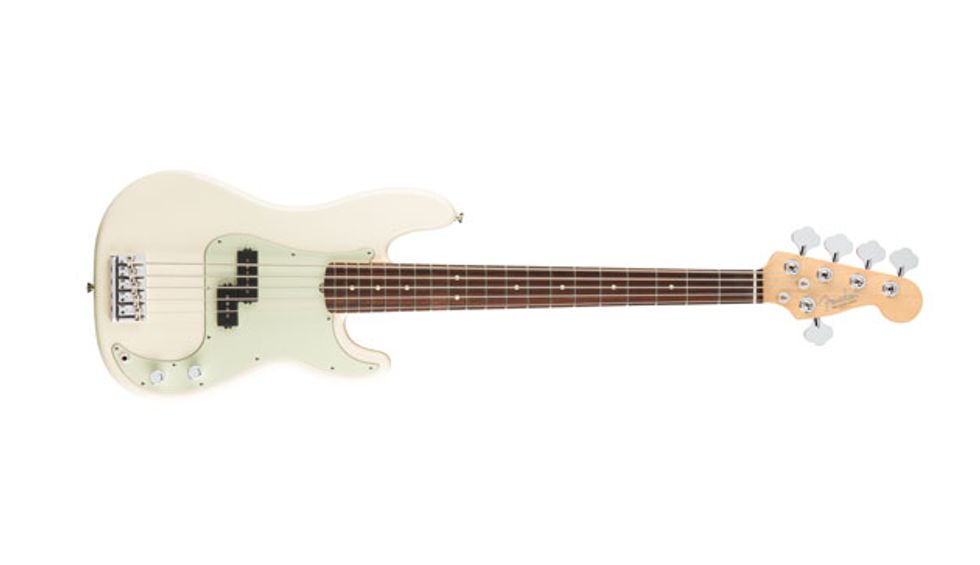
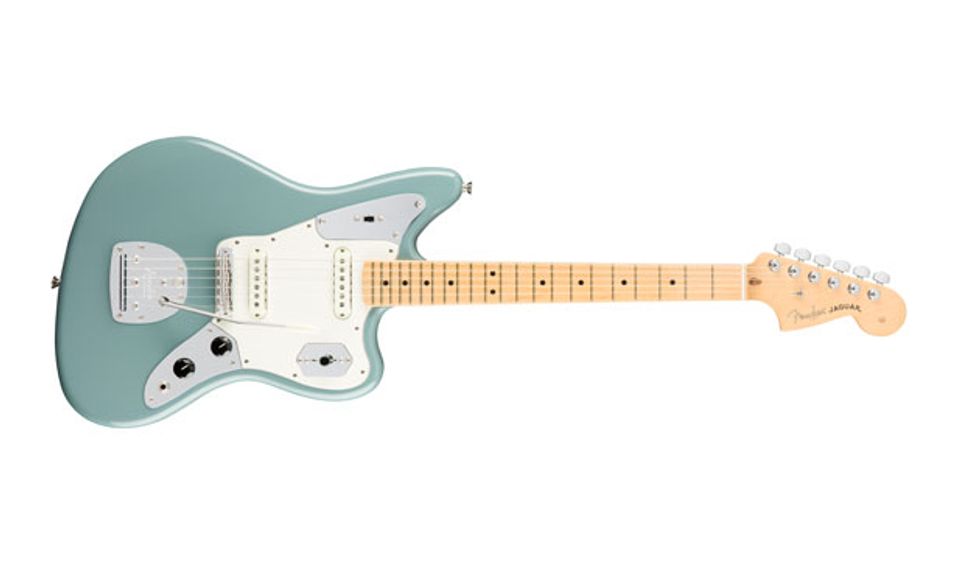
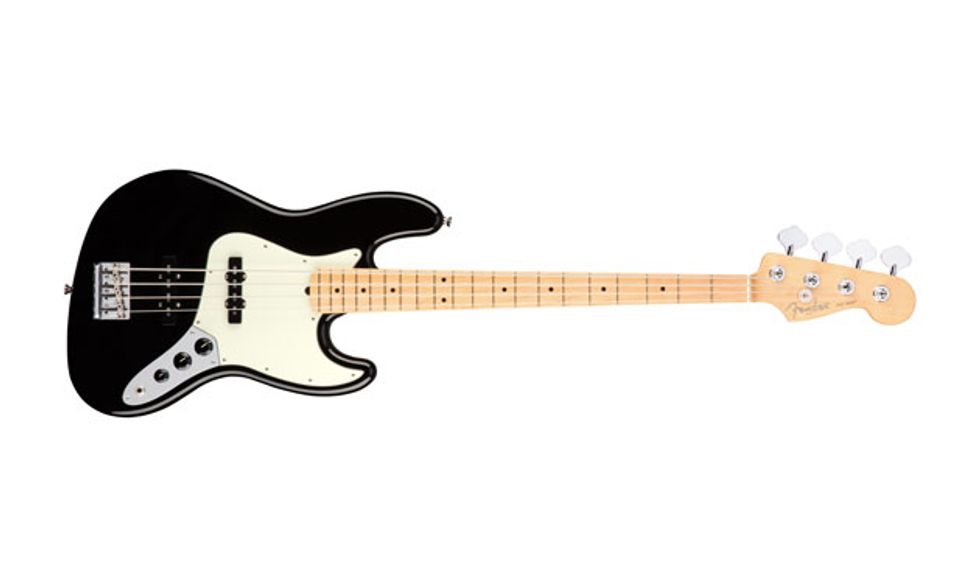
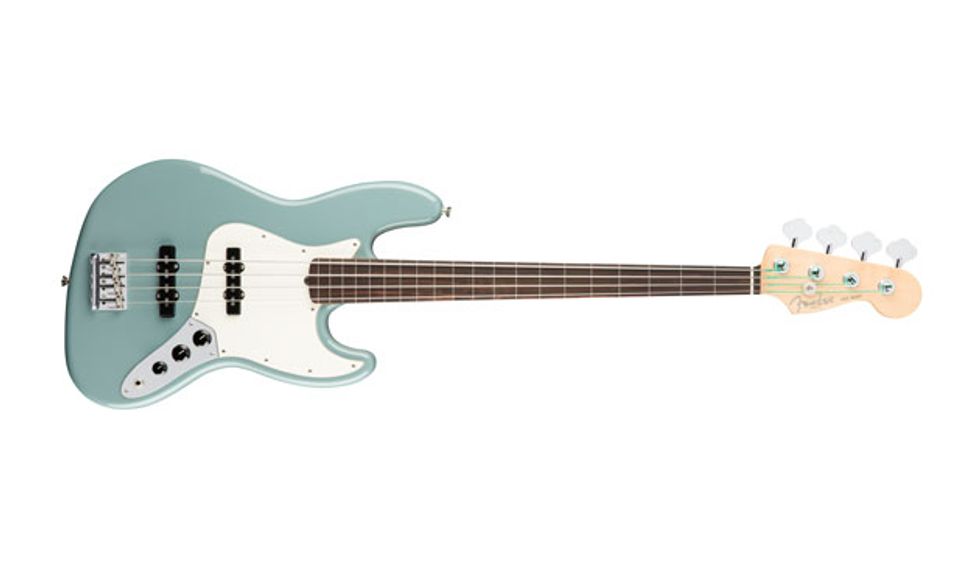

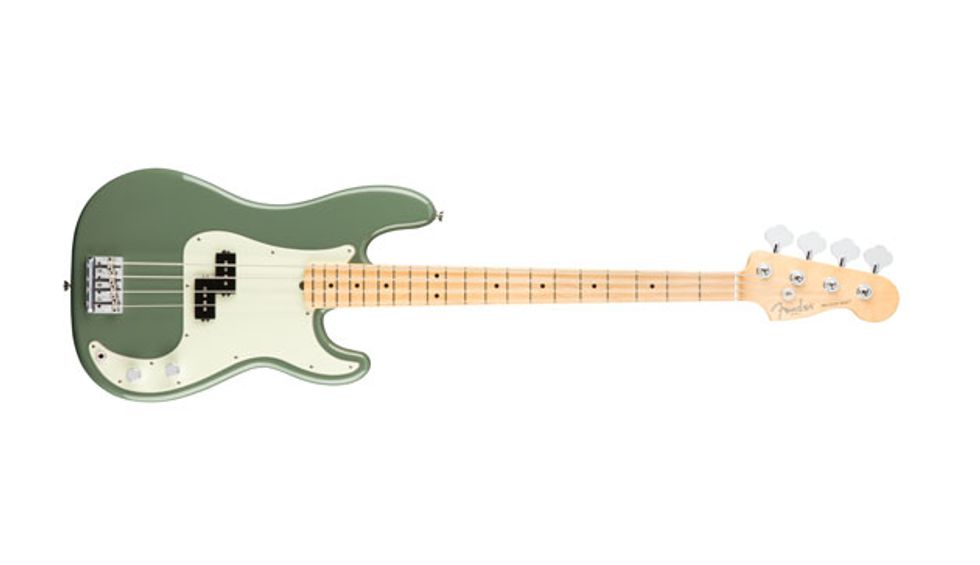
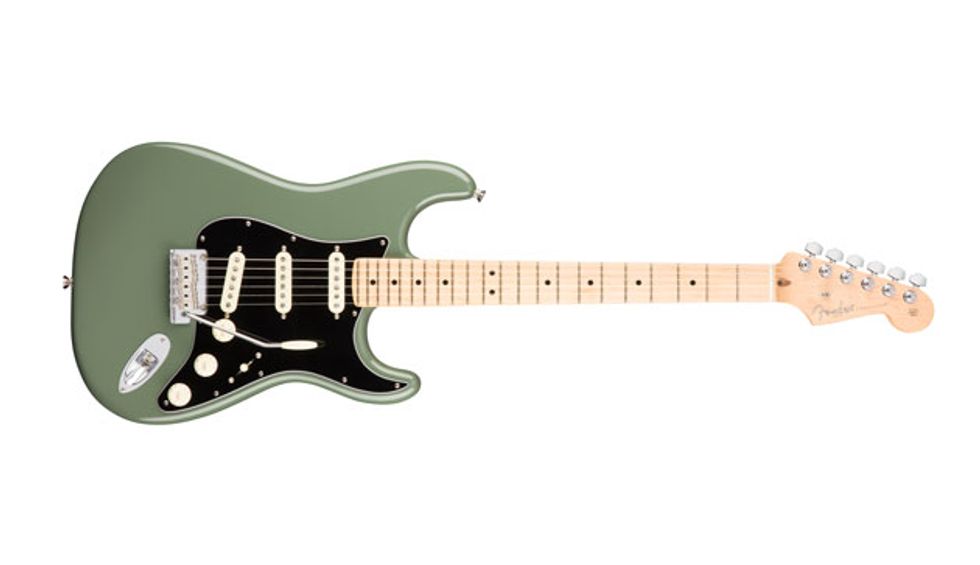
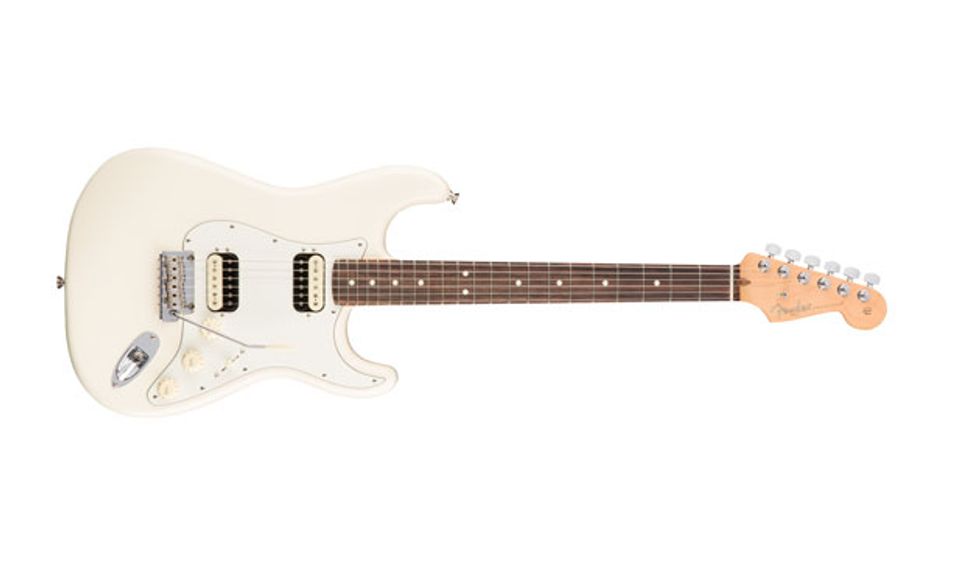
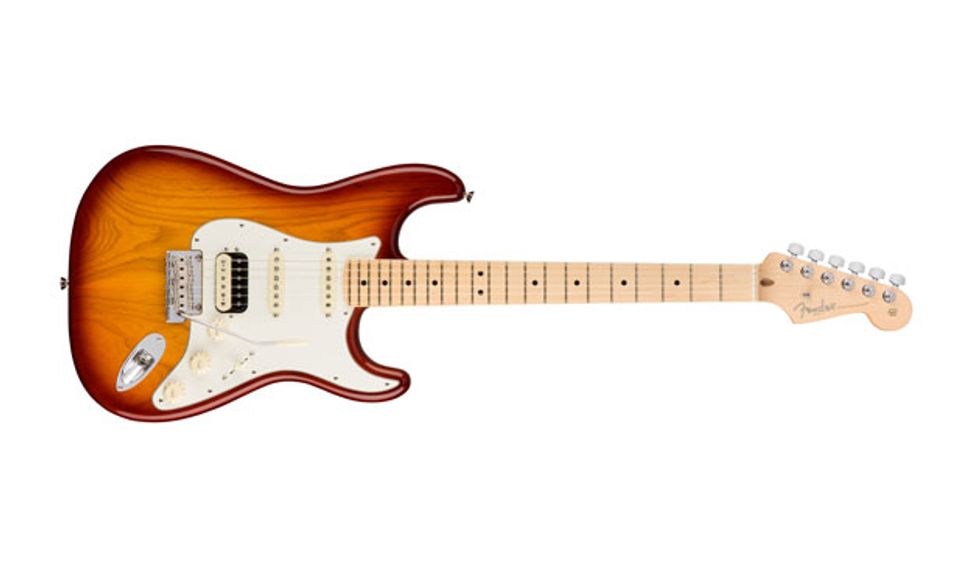
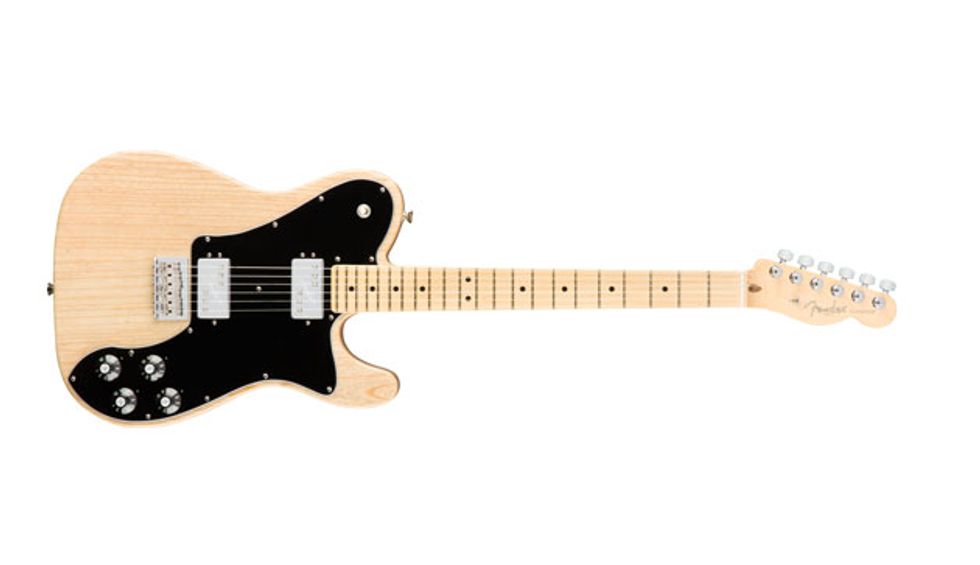
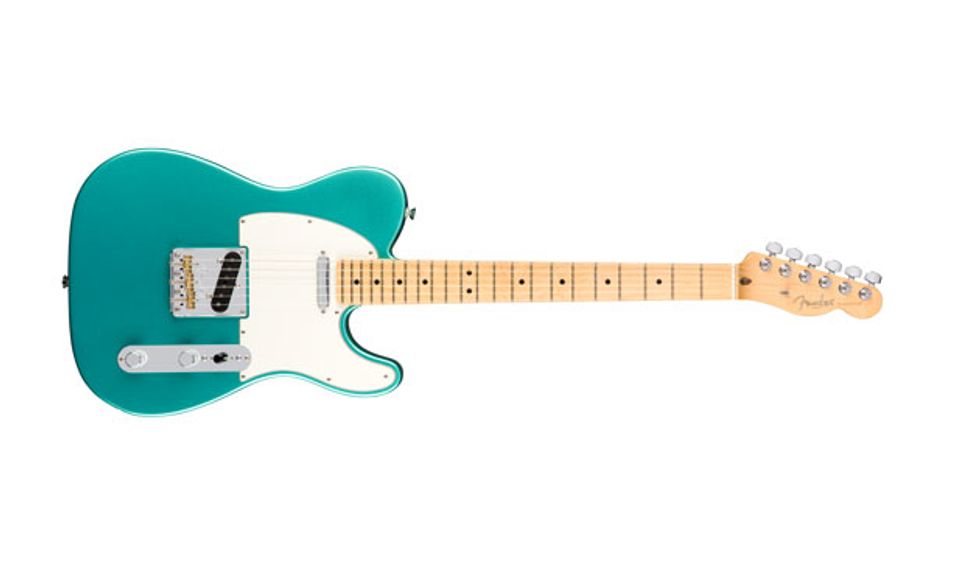



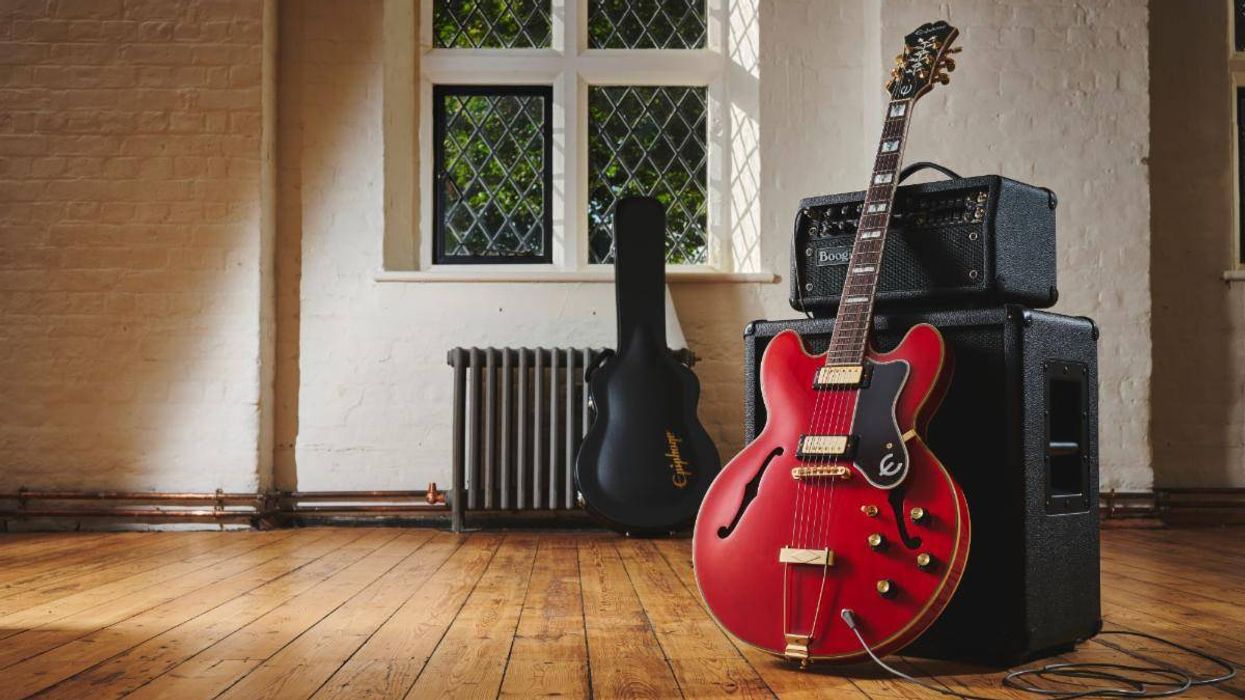
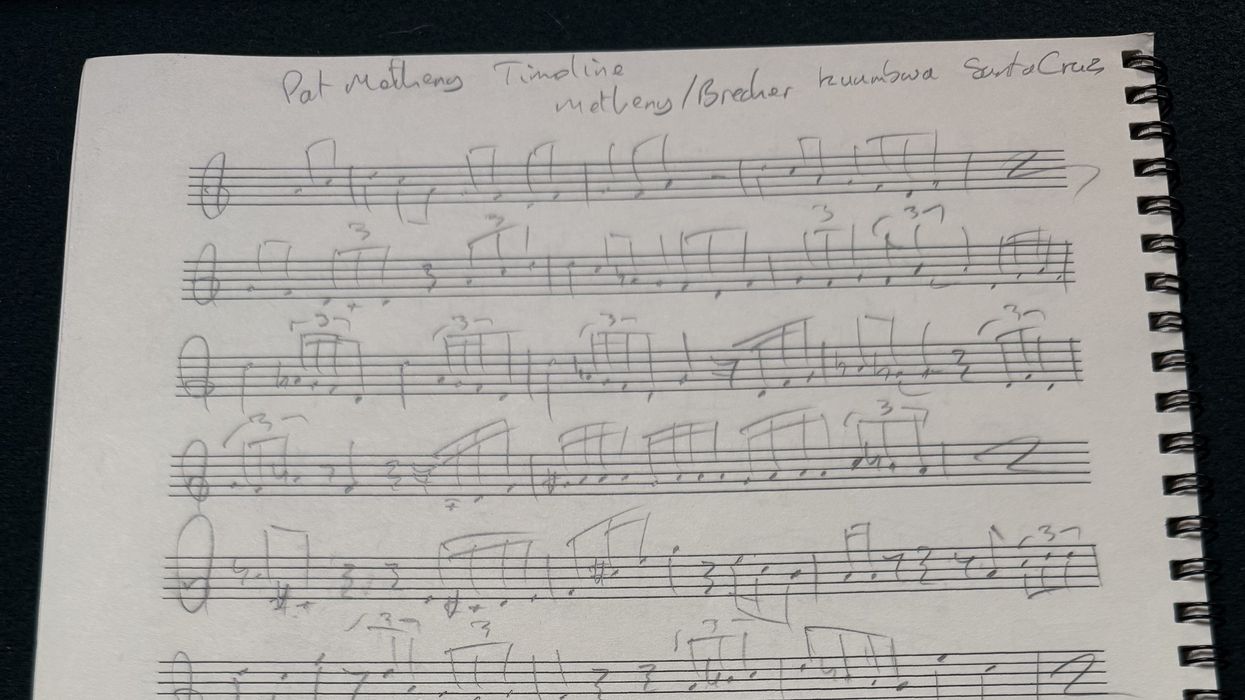
![Devon Eisenbarger [Katy Perry] Rig Rundown](https://www.premierguitar.com/media-library/youtube.jpg?id=61774583&width=1245&height=700&quality=70&coordinates=0%2C0%2C0%2C0)































